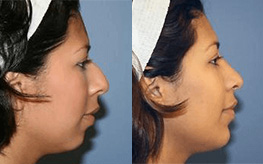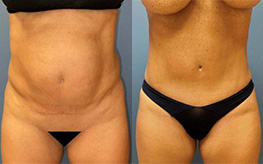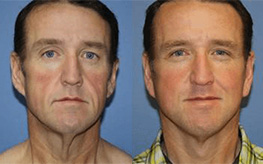“You have a tan,” my professor noted as I joined him in the hospital elevator. I was a fourth-year medical student at UCLA enjoying two glorious weeks of a nonsurgical rotation. With easy eight-hour days and free weekends, I was cycling, running, and swimming…and getting a tan. During my previous month with the cancer surgery team, I’d alternated 14- and 36-hour days. (Great sunscreen!) I loved it. We removed limbs, organs, and large chunks of flesh all to prolong and save lives.
Contents
“That Tan Isn’t Healthy.”
One of my cancer surgery professors was Dr. Donald Morton, world-renowned for his work in malignant melanoma. His pale complexion, crew cut, excellent posture, and long white clinical coat all added to the gravity of his observation as he faced me in the elevator. I might just as well have been smoking a cigarette. “I, uh, yah. I’ve been biking a lot.” Stupid comment, but it filled the loud silence. “You need to wear sunscreen,” he said, and then more gently, “That tan isn’t healthy.” I bought sunscreen that day.
Melanoma Creates Widows

John Connolly, MD (Photo courtesy of Lex Passaris)
Years later, John Connolly, a good friend from college, developed malignant melanoma. He was an orthopedic surgeon who had the best available care, but after fighting the disease for years, he lost the battle. He was in his 40s, and he left a widow and two young sons. Malignant melanoma kills, and it doesn’t spare young people. The number of people diagnosed with it is increasing annually, and this year nearly 10,000 people will die of the disease.

Diego and Siena Canales on a summer day in Venice wearing sunscreen, sunglasses, and long sleeves
Protect Our Children
Children need particular attention. Childhood sunburns are strongly associated with developing malignant melanoma as an adult. Sunscreen is our weapon.

Diego Canales as a boy running with the ball in a soccer game
Outdoor sports put kids at risk. Pilot programs have shown that unless a soccer coach requires kids to apply sunscreen, only about 20% of the team does so. Shade is important, too. A tree-planting campaign for sports fields would help, but at the very least, a shade canopy or a shade sail should be put up during both practices and games.
Sun Damage and Aging
Most of us won’t get malignant melanoma, but if we live long enough, none of us can escape the sun rays’ aging effects. Exposure to both sunshine and tanning beds can result in other skin cancers as well as sagging, wrinkles, brown spots, and scaly “actinic keratoses.” Of all skincare products, the most important remains a broad-spectrum sunscreen.

Siena Canales wearing sunscreen and UV-protective goggles at a swim meet
If you expect to sweat or swim, look for sunscreens that are waterproof or water-resistant, and reapply frequently.
Please Wear Your Sunscreen.
As a medical student, I loved my tan. But Dr. Morton got my attention. John, my college friend, was fair like his Irish ancestors, but he’d lived his whole life in the sunny West. It was a life he’d loved. In fact, he laughed so much, I can’t picture him now with a serious face. He loved skiing, kayaking, rock climbing, biking, and playing tennis. He love practicing medicine and spending time with friends. But most of all, he loved his family. As I think on all the years he’s missed, I’ll put out this little plea: Please wear your sunscreen.





